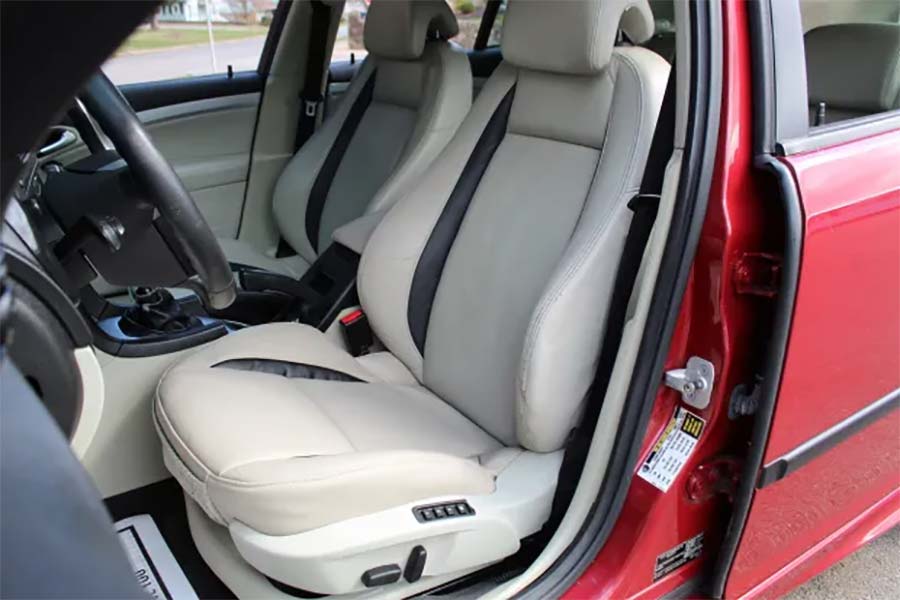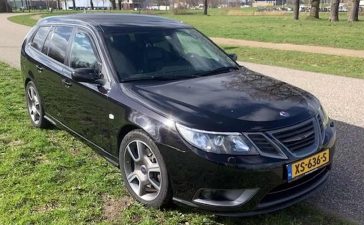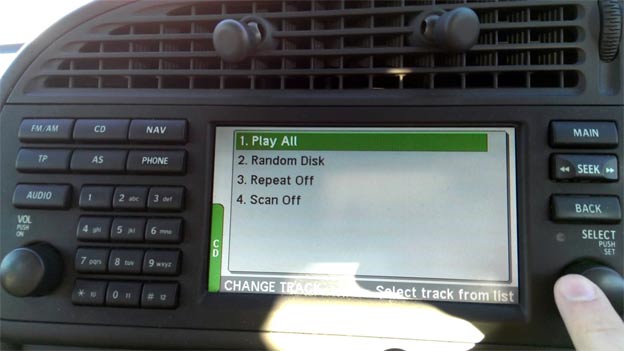Table of Contents
- 1 A Decade Later: How the Dutch Auto Press Sees the Saab 9-3 NG Today
- 2 A Practical Saab? The Trade-Offs of Design and Usability
- 3 Seating Comfort: Built for the Long Haul
- 4 Driving Dynamics: Balanced, but Not a Sports Car
- 5 Reliability and Ownership: Still a Viable Option?
- 6 A Saab That Still Commands Respect
A Decade Later: How the Dutch Auto Press Sees the Saab 9-3 NG Today
Even though Saab ceased production more than a decade ago, its presence in automotive discussions remains surprisingly strong. Enthusiasts still swear by the brand’s engineering philosophy, while journalists continue to revisit its models with fresh perspectives. One such case is the Saab 9-3 NG (New Generation), a car that never made it into many used car buying guides simply because it was discontinued before it had a chance to be considered a “modern classic.”
Dutch automotive outlet Autoweek.nl recently took the time to examine the 9-3 NG, focusing on real-world owner experiences. Their analysis reveals a car that, while not without its faults, still manages to command respect for its driving experience, comfort, and unique Saab personality. It’s a reminder that a vehicle doesn’t have to be in production to remain relevant—especially when it offers something that mainstream brands struggle to replicate.

For the full original review, check out Autoweek’s feature.
A Practical Saab? The Trade-Offs of Design and Usability
Saab cars have long been seen as a blend of rational engineering and emotional appeal, but when it comes to everyday usability, opinions are mixed. The 9-3 Sport Sedan, despite having a spacious trunk, suffers from a narrow opening that makes loading bulky items difficult. While some owners find the trunk large enough for typical needs, the design limitation forces them to rethink what they can actually transport.
Passenger space is another topic of debate. The front seats offer generous room, but rear passengers don’t always fare as well. Taller drivers, especially those around 1.90 meters (6’3”) or more, report that legroom behind them becomes minimal, making long trips uncomfortable for rear-seat passengers.
Interestingly, the 9-3 Sport Estate (wagon) does a better job at solving these issues. While still not class-leading in space, it remains a more practical choice for families. One owner noted that, with two young children, the rear seats felt a bit tight, but that alone wasn’t enough reason to switch to a larger car. Instead, they simply added a Volvo V70 as their second vehicle, keeping the Saab for its charm.

Perhaps the most surprising take comes from 9-3 Cabriolet owners, who often have the fewest complaints. One driver of a 2008 9-3 Cabrio 1.8t Vector described it as “a comfortable long-distance cruiser with surprisingly good trunk space.” Another took his Cabrio on a family road trip, proving that with smart packing, it can work as more than just a weekend car. However, even these owners admit that the convertible, while practical for two passengers, would struggle to meet the needs of a larger family.

While the 9-3 NG isn’t the most spacious car in its segment, its strengths lie elsewhere. Owners seem to accept its compromises in favor of the driving experience and character that few other cars can match.
Seating Comfort: Built for the Long Haul
Saab has always been known for ergonomically sound, well-supported seats, and the 9-3 NG is no exception. Many owners, particularly those who spend a lot of time on the road, praise the firm but comfortable design that keeps fatigue at bay even after hours behind the wheel.
One driver of a 2007 9-3 Sport Sedan 1.8t with a height of 1.90 meters confirmed that he always steps out feeling refreshed, even after long-distance drives. Another owner of a 2006 9-3 Sport Estate agreed that while Saab’s seats may not quite match those of Volvo, they are still among the best for extended journeys.

Wear and tear, however, is a factor. A 9-3 Sport Estate 1.9 TiD owner with nearly 380,000 km (236,000 miles) still finds the seats comfortable, but admits the leather has started cracking due to a lack of conditioning over the years.
Cabriolet owners are some of the most enthusiastic about the seating experience. One even went so far as to say, “There are no better seats than these heated, fully adjustable leather armchairs.” This high praise reinforces Saab’s reputation for prioritizing driver and passenger comfort in a way that remains relevant today.
Driving Dynamics: Balanced, but Not a Sports Car
Saab labeled the 9-3 NG a Sport Sedan and Sport Estate, suggesting a dynamic and engaging driving experience. In practice, most owners feel that it strikes a fine balance between comfort and responsiveness.
In urban settings and winding roads, the car’s steering is quick and precise, making it feel agile for its size. A 9-3 Sport Estate 1.8i Linear Sport owner described it as “sharp, quick, and enjoyable to drive, even in city traffic.”
On the highway, the 9-3 remains comfortable and stable, but opinions on its high-speed handling vary. One Sport Sedan driver finds the steering not razor-sharp but still communicative, though at speeds above 190 km/h (118 mph), the rear end feels slightly less stable, possibly due to Saab’s passive rear-wheel steering system, ReAxs.
ReAxs was designed to help with cornering agility, but not all drivers are convinced it improves handling. Some feel that it reduces grip in faster turns, requiring an adjustment period. Still, most owners agree that for everyday spirited driving, the 9-3 NG handles confidently without sacrificing ride quality.
Convertible owners, however, approach the car differently. Instead of pushing for performance, they find the 9-3 NG best enjoyed as a relaxed cruiser, with one driver stating, “It encourages a calm driving style—it’s not a corner carver.”
Reliability and Ownership: Still a Viable Option?
One of the biggest concerns when buying a used Saab is parts availability and long-term maintenance. While Saab specialists remain active, some owners have noticed that certain parts have become harder to source since Hedin took over parts production.
Routine maintenance remains straightforward, but a few common issues persist. Several owners mentioned HVAC fan noise as a frequent annoyance, with some fans eventually failing entirely. The factory sound system also receives criticism for lackluster audio quality.
For Convertible owners, rust under the roof cover is a known weak point. One driver caught the problem early and addressed it with preventive maintenance, while another faced a €1,600 bill for rust repair when it was left unchecked.
Despite these issues, most owners remain highly satisfied with their cars and have no plans to replace them anytime soon.

A Saab That Still Commands Respect
Dutch automotive journalists and Saab owners agree: the 9-3 NG isn’t perfect, but it remains an incredibly compelling used car. While rear space is limited, trunk access isn’t ideal, and parts availability could become more challenging, the driving experience, comfort, and engineering quality continue to make it stand out.
For those who understand Saab’s quirks and appreciate the blend of Scandinavian design, turbocharged performance, and long-distance comfort, the 9-3 NG remains a rewarding and enjoyable car to own.
For more owner insights, visit Autoweek.nl’s full review.











